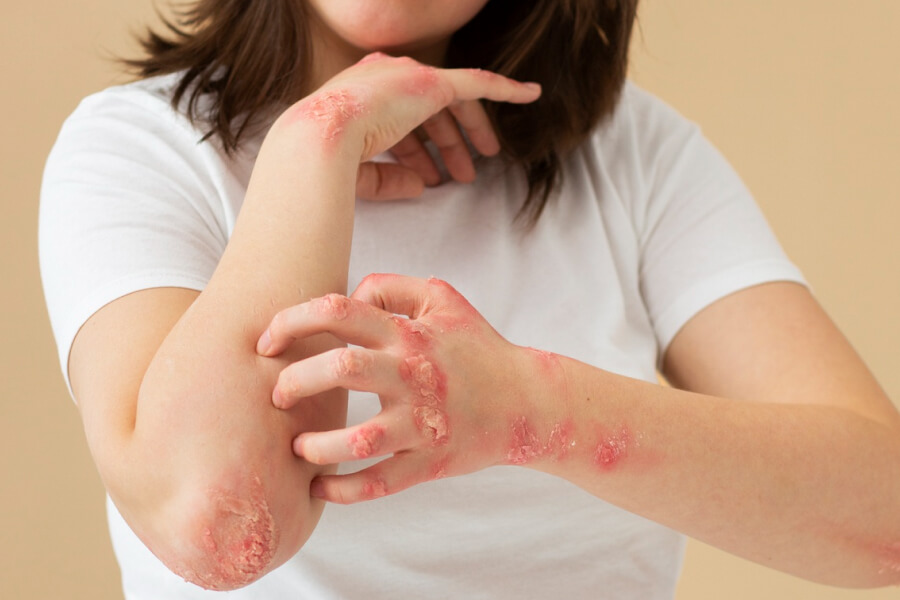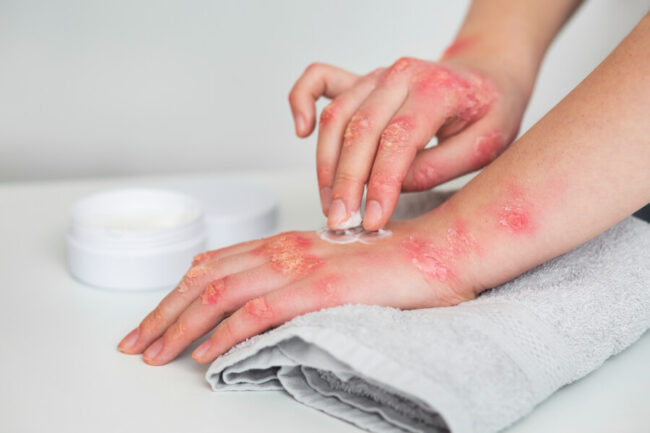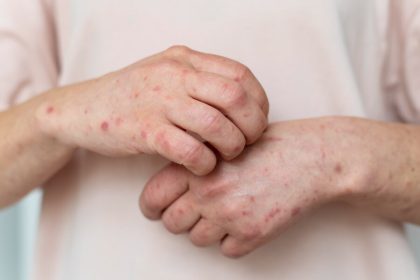Scabies on the skin can be a stressful and uncomfortable infestation, but with the right knowledge and preventive measures, you can effectively manage its spread within your home.
Let’s dive into understanding scabies, how it spreads, and most importantly, actionable tips and tricks to keep your home scabies-free.
Scabies on the skin how it spreads
Scabies is highly spread primarily through direct, prolonged skin-to-skin contact with an infected person.
This makes it particularly prevalent in places where close physical contact is common, such as households, schools, and nursing homes.
Additionally, scabies can spread through sharing personal items like clothing, bedding, and towels that have been contaminated by the mites.
Scabies on the skin earlier symptoms
Identifying scabies early is crucial for preventing its spread. Here are the most common symptoms to watch out for:
- Intense itching, especially at night.
- A pimple-like rash that may include tiny blisters or sores (skin lesions).
- Thin, irregular burrow tracks made up of tiny blisters or bumps on the skin.
These symptoms are often found in areas such as the wrists, elbows, armpits, waist, and the webs of the fingers.
Diagnosing Scabies on the skin
Recognizing Scabies on the skin: A Quick Ink Test
At home, a quick ink test can help identify scabies. Apply washable ink to the itchy area and wipe it off.
If there are burrows, the ink will seep into them and remain visible as dark, wavy lines.
Preventing Scabies
Preventing scabies involves both personal measures and environmental control. Here’s a comprehensive guide on how to keep scabies at bay.
How to Avoid Getting Scabies
- Avoid Prolonged Skin Contact: Limit close physical contact with anyone known to have scabies.
- Personal Hygiene: Maintain good personal hygiene. Regular bathing and washing hands can help reduce the risk of infestation.
- Avoid Sharing Personal Items: Do not share clothing, towels, or bedding with others, especially if they are infected.
Preventing the Spread of Scabies
- Isolate Infected Individuals: If someone in your home has scabies, minimize their contact with others until they have completed treatment.
- Clean Environment: Regularly clean and vacuum your home, focusing on areas where the infected person has spent a lot of time.
- Wash Clothing and Bedding: Wash the infected person’s clothing, bedding, and towels in hot water and dry them on a high heat setting. This will kill the mites and their eggs.
- Seal Non-washable Items: Place non-washable items in a sealed plastic bag for at least 72 hours. Scabies mites cannot survive away from human skin for more than 2-3 days.
Treating Scabies on the skin
Traditional Treatments for scabies on the skin
- Prescription Medications: The most common treatments for scabies are prescription medications such as permethrin cream and ivermectin. These medications are applied to the entire body from the neck down and left on for at least 8-14 hours before being washed off.
- Topical Ointments: In addition to prescription medications, your doctor might recommend topical ointments to alleviate itching and discomfort.
Natural Remedies for scabies on the skin
While natural remedies are not a substitute for medical treatment, they can help soothe symptoms and support the healing process:
- Tea Tree Oil: Known for its antimicrobial properties, tea tree oil can help reduce itching and kill mites. Mix it with a carrier oil and apply to the affected areas.
- Neem Oil: Neem oil has anti-inflammatory and antibacterial properties. Apply neem oil directly to the skin or add it to your bathwater.
- Aloe Vera: Aloe vera can soothe irritated skin and promote healing. Apply pure aloe vera gel to the affected areas.
Scabies permethrin treatment
Permethrin skin cream is used to treat scabies. But please read the side effects first.
Managing Scabies at Home
Effective management of scabies at home involves thorough cleaning and adopting preventive measures to ensure mites do not spread or re-infest your living space.
Tips for Cleaning Your Home to Prevent Scabies on the skin
- Vacuum Regularly: Vacuum carpets, rugs, and upholstered furniture daily, focusing on areas where the infected person has spent time.
- Wash Linens Frequently: Wash all bedding, towels, and clothing in hot water and dry them on a high heat setting.
- Disinfect Surfaces: Wipe down hard surfaces with a disinfectant cleaner to kill any mites that might be present.
- Seal Non-washable Items: Place items that cannot be washed, such as stuffed animals or shoes, in a sealed plastic bag for at least 72 hours.
- Use Protective Covers: Consider using mattress and pillow covers that can be easily removed and washed.
When to Seek Medical Help for scabies on the skin
It’s important to consult a healthcare professional if:
- The itching and rash persist despite treatment.
- You notice signs of a skin infection, such as increased redness, swelling, or pus.
- You are uncertain about the diagnosis or need guidance on treatment options.
Comparison of Scabies vs. Bed Bugs
While both scabies and bed bugs cause itching and discomfort, they are different infestations. Scabies mites burrow into the skin, whereas bedbugs live in cracks and crevices and come out to feed on blood.
Conclusion
By understanding the nature of scabies on the skin, recognizing the symptoms, and implementing effective cleaning and treatment strategies, you can protect yourself and your loved ones from this uncomfortable condition.
Remember, reaching medical treatment is essential for successfully irritating scabies, so don’t hesitate to consult a healthcare professional if you suspect an infestation.
With the right approach, you can keep your home scabies-free and ensure a healthy environment for everyone!
FAQs
Can Scabies Mites be Seen?
Scabies mites are microscopic and cannot be seen with the naked eye. However, their burrow tracks and the resulting rash are visible.
How Do Doctors Diagnose Scabies?
If you suspect you have scabies, it’s essential to seek medical advice. Doctors typically diagnose scabies based on the appearance of the rash and burrow tracks. They may also perform a skin scraping to look for mites, eggs, or mite feces under a microscope.
What is the duration of Scabies?
With proper treatment, the symptoms of scabies on the skin typically start to improve within a few days. However, itching can persist for a few weeks even after the mites are killed.
Will Scabies Go Away on Its Own?
Scabies will not go away on its own and requires medical treatment to eliminate the mites and their eggs.







